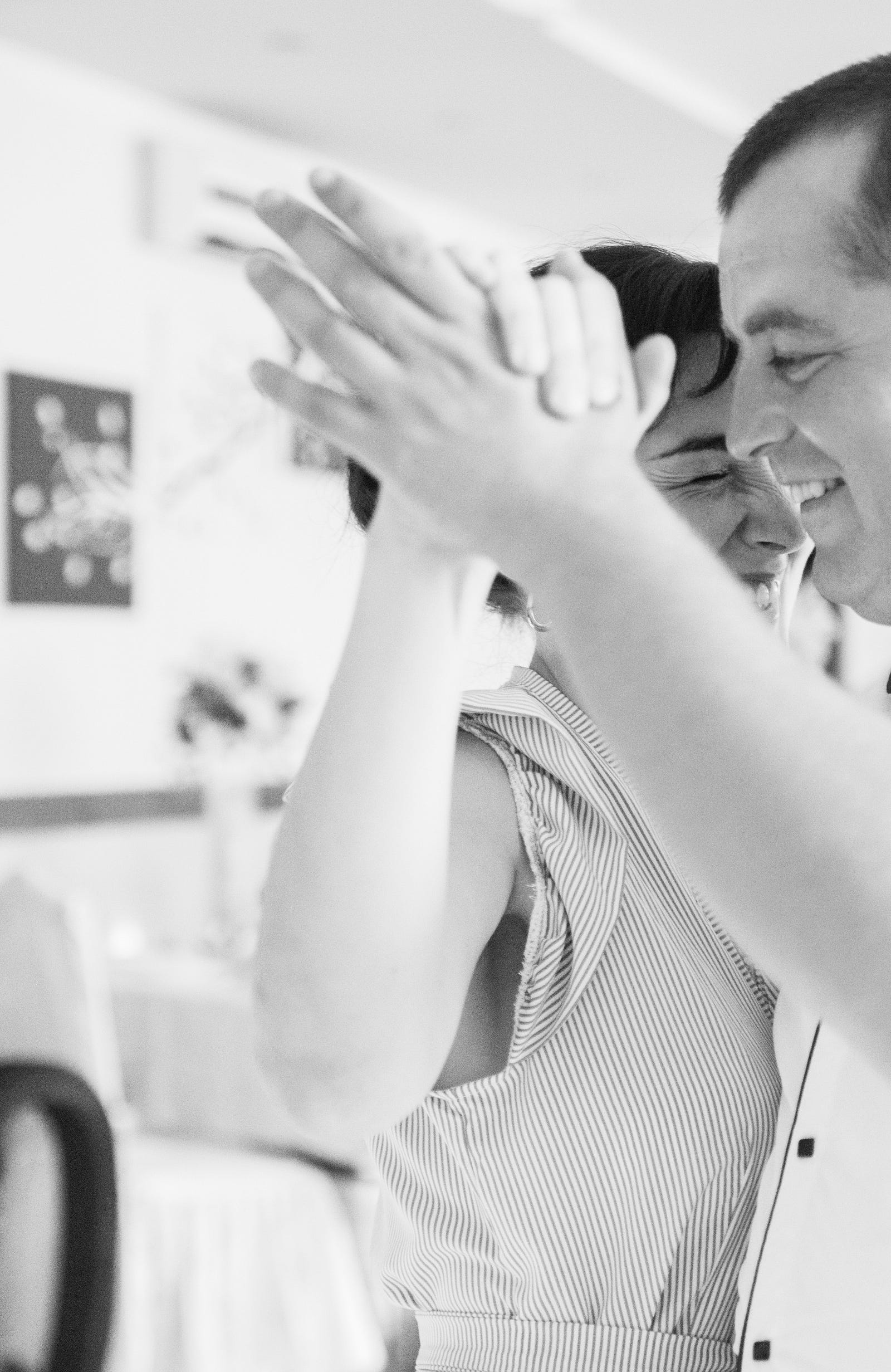LET’S HAVE A REAL TALK ABOUT GETTING OLDER. I understand you may have a cultural fear of aging, and the thought of hitting those milestone ages can be daunting. Today, I want to explore how I am getting older, wiser, and funnier: An aging myth exposed.
Now, I’m not saying that getting older won’t bring some changes to your life.
You might not be breaking records as a pro athlete in your 40s, and you might need to deal with hair loss or gray strands.
Age Has An Impact
Sure, aging has an impact, but there are things you can control, like your diet, whether you smoke, and how much body fat you’re carrying around.
Here’s the deal: many people in their 20s, 30s, and 40s aren’t giving their bodies the attention they deserve. The result? Potential health issues later on.
Start doing the basics now — even just a few times a week — and you’ll set yourself up for a smoother ride as the years pass.
But We May Blame Aging Too Much
But here’s the thing: as your buddies age, you might notice a trend of negativity.
Suddenly, we’re blaming our weight gain or muscle aches on their age instead of acknowledging that maybe they’ve been skipping workouts or not taking care of themselves.

I’m 60. I plead guilty to committing those sins.
But do you ever wonder how much of what we believe about getting older is more fiction than fact?
Turns out quite a bit. I’m here to debunk a common myth about aging so you and I can live a healthy, kick-ass life as the years roll on.
You Should Exercise Less: An Aging Myth Exposed
You’ve probably heard that aging means you’ll slow down, weaken, and maybe even feel fragile.
Well, there’s some truth to it — things like testosterone levels and muscle mass decrease as the years pass.
- Men’s testosterone levels may decline about one percent per year after age 30.
- In premenopausal women, testosterone is made mainly in the ovaries. Levels decline after menopause, usually between ages 45 and 55.
Exercise Temporarily Increases Testosterone
But here’s the good news: Men can temporarily (and slightly) pump the brakes on these changes.
After exercise, testosterone levels rise — but not too long. Sometimes, testosterone may be elevated for 15 to 60 minutes after exercise.
It’s not yet clear what health effects, if any, these temporary boosts may have. Of course, exercise has many other well-known health perks.
A 2012 study of men discovered that regular exercise was linked to higher testosterone levels than sedentary men.

The effects aren’t the same for everyone. An older study showed that a single 30-minute weightlifting session increased testosterone levels by 22 percent in men but only 17 percent in women.
Moreover, some research suggests T level gains may only be temporary in women.
Better Bone and Muscle Health
Regular exercise, especially lifting weights, can boost testosterone levels and strengthen bones.
It’s like a shield against that decline in bone density that typically starts after 50.
Any physical activity for fun and leisure, regardless of age, can benefit your brain as you age.
A Better Brain
Sticking to a routine of exercise throughout your adult life is the most effective way to keep your mind sharp and your memory intact, according to a study published in the Journal of Neurology Neurosurgery & Psychiatry.
This study is observational and, as such, can’t establish cause, and the researchers acknowledge various limitations to their findings. Still, the researchers concluded this:
“Together, these results suggest that the initiation and maintenance of physical activity across adulthood may be more important than the timing….or the frequency of physical activity at a specific period.”
Exercise Benefits: Better Cardiovascular Function
Regular exercise as you age can bring significant health benefits, such as reducing the risk of heart-related problems.

One way this happens is by positively affecting the balance of your heart’s autonomic system, particularly by boosting the vagal (relaxation) component.
For older individuals, endurance training can lower resting and submaximal (moderate) heart rates and systolic and diastolic blood pressure.
It also increases stroke volume, the amount of blood the heart pumps in one beat.
Cardiovascular Benefits in Detail
Are you an older exerciser? Did you know that physical activity in older people is associated with lower cardiovascular mortality?
During intense effort, important factors like stroke volume, cardiac output, contractility (heart muscle’s pumping ability), and oxygen uptake increase while total peripheral resistance and blood pressure decrease.
These changes are particularly beneficial during peak physical activity, as they help the heart by reducing the workload, making it easier for the left ventricle (a heart chamber) to function well during both contraction and relaxation.
These findings highlight the importance of incorporating higher-intensity training into exercise routines, even for older individuals.
In a specific study focusing on frail elderly individuals, researchers emphasized the positive impact of exercise, especially after cardiac surgery or intervention for heart valve issues.
The study delves into how tailored exercise programs can provide the best care for older patients dealing with frailty after such medical procedures.
What Should We Older Folks Do?
Older persons should follow the overload training principle to optimize their physical activity.
We would exercise near the limit of maximum capacity to sufficiently challenge our body systems.
Doing so should allow us to induce improvements in physiological parameters such as VO2 max and muscular strength.
To attain a high level of cardiorespiratory fitness, you should be physically active for at least six months. This duration also applies to balance exercises to reduce falls.
Exercise for Older Folks: Getting More Specific
Staying active as you get older is super important for your health. It helps prevent many health issues that can come with aging and keeps your muscles strong so you can do everyday things without relying on others.

Here’s what’s recommended by the U.S. Centers for Disease Control for folks who are 65 and older:
Move
Aim for 150 minutes (or more) weekly of moderate activities, like brisk walking.
That’s only 30 minutes a day for five days a week. Rake the leaves, mow the lawn, or learn a new dance.
If you prefer more intense stuff like hiking or jogging, you can do 75 minutes a week. I prefer walking at about 3.2 mph.
Do Strength Training
When I ask my patients if they do physical activity, I smile as they say yes, they walk. But when I ask about resistance training? Silence.
Try activities that make your muscles work at least two days weekly. You could lift weights, use resistance bands, or even do exercises like push-ups. You can do different things to strengthen your muscles at home or the gym.
Pick activities that involve all the important muscles in your body, like your legs, hips, back, chest, stomach, shoulders, and arms.
You could consider:
- Lifting weights
- Using stretchy bands that provide resistance
- Doing exercises that use your body weight (like push-ups and sit-ups)
- Spending time gardening by digging in the soil
- Trying some yoga poses.
These activities will help you build and tone your muscles.
Practice Balance
Do things that improve your balance, like standing on one foot. This practice helps you stay steady on your feet and prevents falls. This practice is the one most of my patients forget to do, but falls can be catastrophic.
As outlined in the comprehensive guide, engaging in balance activities is instrumental in preventing falls and minimizing the risk of injuries, including bone fractures.
Incorporating exercises such as walking backward, standing on one leg, or utilizing a wobbleboard can significantly enhance balance. Strengthening the back, abdomen, and leg muscles improves overall balance.
Final Thoughts — An Aging Myth Exposed
Remember, do what you can, even if it’s a bit less than the recommendations. The main thing is to keep moving and stay active based on what feels right for you.
One more thing: Adjust your intensity to your age and physical limits. Don’t be one of the weekend warriors who injure themselves.
Thank you for reading “An Aging Myth Exposed.”




